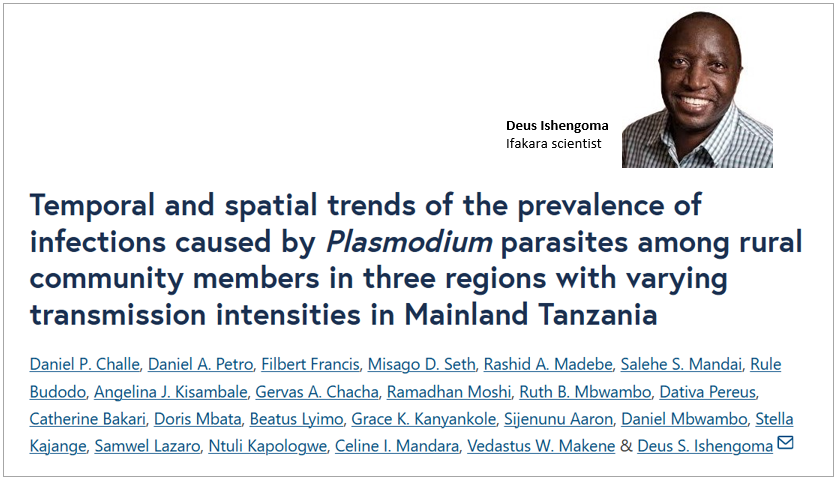
MALARIA: Hotspots shifting in Tanzania – Scientists call for targeted action

Malaria, one of Tanzania’s oldest public health challenges, is changing its pattern. New research by local scientists has revealed that malaria infections are shifting across the country — with some villages seeing higher infection rates than others, even when they are just a short walk apart.
The studies, led by the Ifakara Health Institute (IHI) and the National Institute for Medical Research (NIMR), show that while national control efforts have brought major progress, malaria continues to affect rural communities in complex and uneven ways.
“Our findings show that malaria risk isn’t uniform — it varies widely even within a single district,” said Dr. Deus Ishengoma of IHI, one of the study leads. “This means Tanzania’s malaria fight must become more targeted and adaptive.”
When the map keeps changing
For decades, Tanzania has been at the forefront of Africa’s malaria control efforts. Yet, this new evidence suggests that a one-size-fits-all approach may no longer work. The shifting malaria patterns mean some areas that were once low-risk are now seeing increases — while others have seen improvements.
Understanding these trends is vital to ensure that mosquito nets, medicines, and other resources reach the communities that need them most.
Key findings show:
- Malaria infections vary sharply between nearby villages.
- The highest risk groups include school children, men, and people living in poorly built houses.
- Infection rates also fluctuate over time, with 2023 recording the highest prevalence (26.9%) among study years.
Uneven risk, even within villages
The first study, conducted in Muheza District in Tanga Region, found malaria infections differing dramatically between households less than a kilometer apart.
Children and adults living in traditional, less-protected homes were more likely to be infected. The researchers recommend micro-stratification — dividing areas into smaller units to better target interventions such as spraying, bed net distribution, and public health education.
“These findings will be useful in planning future malaria stratification and targeting interventions to high-risk groups and areas,” the study notes.
Tracking infection trends across regions
The second study monitored malaria trends from 2021 to 2023 in Tanga, Ruvuma, and Kigoma regions. It found infection rates rising and falling over time, highlighting malaria’s unpredictable nature.
The researchers identified 2023 as the year with the highest infection prevalence. Once again, school children, men, and those living in poor housing were the most affected groups.
Toward a smarter fight against malaria
Both studies — published recently in the Malaria Journal — stress that targeted, data-driven strategies are essential if Tanzania is to meet its goal of eliminating malaria by 2030.
That means continuously tracking new hotspots, understanding local risk factors, and tailoring interventions to protect those who are most at risk.
As malaria continues to evolve, so too must Tanzania’s response — grounded in science, community engagement, and a renewed commitment to health equity.
Ifakara scientists involved in the study
Researchers from Ifakara who contributed to the studies include Salehe Mandai, Rule Budodo, Angelina Kisambale, Dativa Pereus, Catherine Bakari, Doris Mbata, Grace Kanyankole, and Dr. Deus Ishengoma, alongside colleagues from NIMR and partner institutions.
🔗 Read the full study: Uneven risk within villages, here | Tracking infection trends here.
